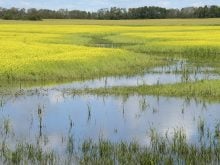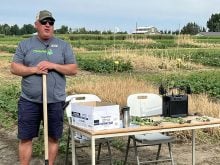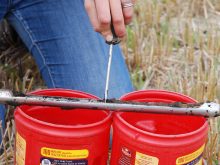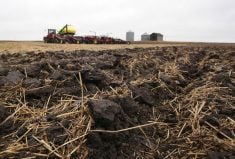U of S’s ag college receives funding for two stable isotope mass spectrometers that will track nutrient movement in soil
Researchers at the University of Saskatchewan’s soil science department will soon have access to new equipment that will allow them to more accurately trace the movement of important soil nutrients.
The university plans to acquire two new stable isotope mass spectrometers, machines that will boost research capacity at the College of Agriculture and Bioresources.
Funding for the equipment, valued at about $1.2 million, came from the Canadian Foundation for Innovation and from the farmer-funded Western Grains Research Foundation, which contributed $818,000.
By gaining a better understanding of how nutrients move through the soil, researchers can look for ways to improve crop production practices while maximizing yields, reducing input costs and minimizing greenhouse gas emissions.
Read Also

Short rapeseed crop may put China in a bind
Industry thinks China’s rapeseed crop is way smaller than the official government estimate. The country’s canola imports will also be down, so there will be a lot of unmet demand.
“We have a long reputation of using stable isotopes for environmental and agronomic research and these new systems are a fantastic addition to our research capacity,” said Bobbi Helgason, an associate professor in the department of soil science who led the funding application process, along with colleagues Melissa Arcand and Kate Congreves.
To learn how carbon and nitrogen move through the soil, researchers must be able to measure small flows of the nutrients. However, it can be difficult to determine where the nutrients are coming from and where they are ending up.
Stable isotopes are heavier versions of nutrients like carbon and nitrogen that exist naturally in the environment. With the help of the new equipment, the isotopes can also be traced and analyzed more easily.
The knowledge gained will contribute to a better understanding of carbon sequestration and soil health.
It can also help inform researchers about how much nitrogen is being fixed by certain pulse crops, for example.
This, in turn, will allow growers to more accurately determine optimal fertility rates.
“We can use this equipment to understand the dynamics of carbon and nitrogen with a level of detail we wouldn’t be able to see without using the stable isotopes,” said Helgason. “We can tell which pathways carbon and nitrogen have taken throughout the cropping ecosystem.”
The first of the two new spectrometers — a piece of equipment Helgason calls the “workhorse” — was funded through WGRF.
It updates an existing system already being used at the university.
“We were spending a lot of time keeping our old system up and running and this new bulk analysis system streamlines and automates the sample analysis with more precision and efficiency,” she said.
The new workhorse is already operational and is available to U of S researchers and external users.
The second system, known as the Cadillac, is new to the department and is the first of its kind in Canada.
The Cadillac was jointly funded by WGRF and CFI.
It provides a more precise level of analysis and information on carbon and nitrogen in specific compounds, allowing researchers to conduct more sophisticated tracing throughout the crop production cycle.
“Not all soil carbon is made the same; some is very stable and some is unstable and more susceptible to decomposition,” Helgason explained.
“The workhorse gives us the quantity of isotope in a whole sample, but the Cadillac can give us isotopic quantity of a variety of forms from within that same sample. In that way, the compound specific system can help us peer into the different pools of carbon in the soil and understand the forms of carbon that result from a particular way of managing our soil ecosystem.”
The new research tools are expected to provide more precise information on fertility requirements and help producers improve on-farm environmental and economic performance.
“We struggle to figure out how much nitrogen a crop will take from the soil and decomposing residue from the previous crop versus how much needs to be added as fertilizer,” Helgason said.
“Using stable isotopes, we can trace nutrients in different crop residues to see how they impact soil fertility for upcoming crops and quantify the amount of nutrients that will be provided by the crop residue.”
Other benefits at the farm level could include the adoption of practices that improve nitrogen-use efficiency, reduce greenhouse gas emissions and improve the industry’s understanding of soil carbon sequestration capacity.
It could also improve understanding of which pulse varieties are more successful at fixing nitrogen.
WGRF is a farmer-funded and farmer-directed non-profit organization that supports in agricultural research for the benefit of western Canadian farmers.
















